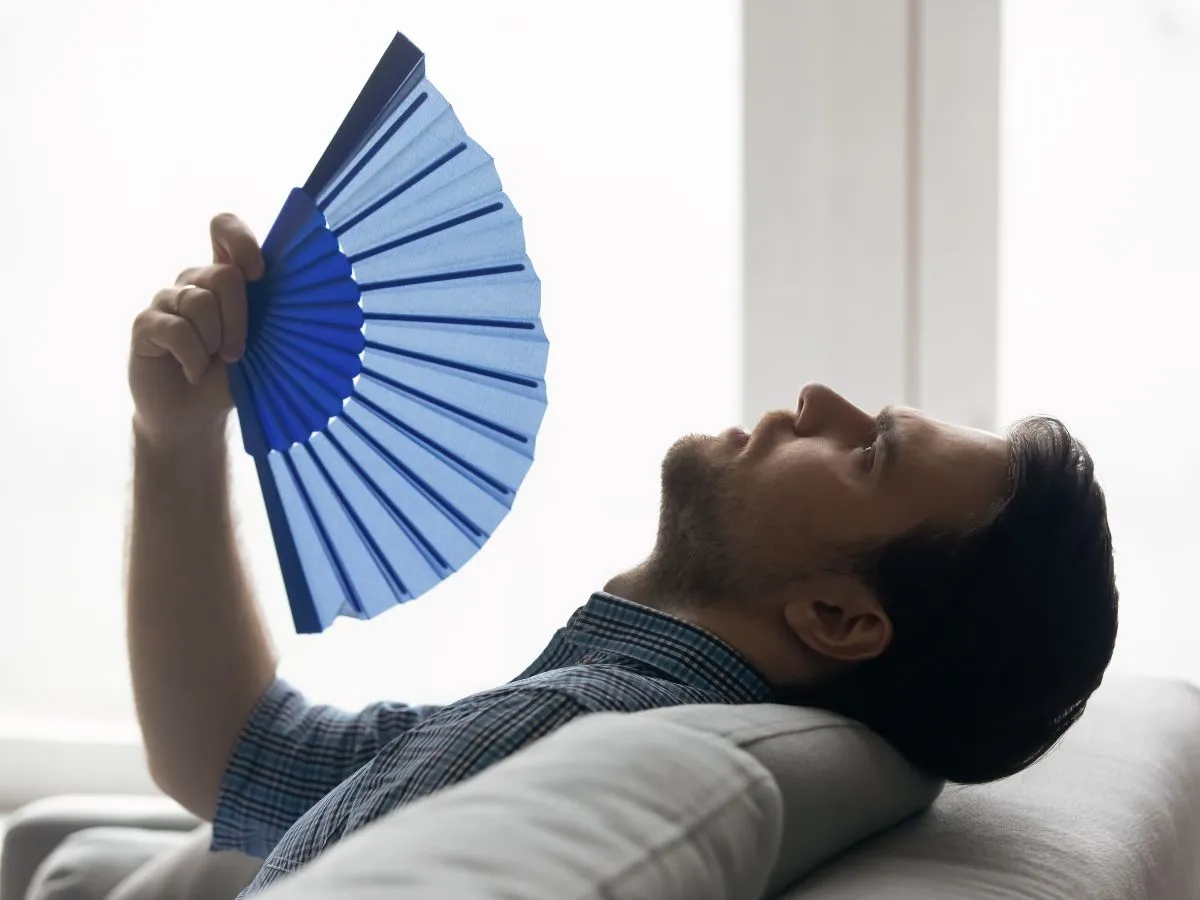A seasonal variation study in male Testosterone levels in Northern Norway, measuring variations in total and free testosterone, Lutenizing Hormone(LH) and Sex Hormone Binding Globulin( SHBG) levels of 1548 men yielded contradictory results.
Northern Norway was chosen since the population was exposed to a wide seasonal variation in both temperature and daylight.
Total Testosterone – showed seasonal variation with a small peak in February, lowest in June, but highest T-levels in the months of October and November.
Free Testosterone – also demonstrated a clear seasonal pattern with the peak in December while lows recorded in August.
Given that vitamin D is most abundant during summer months which helps boost testosterone, the obvious result/ or expected outcomes would be that t levels should be high in summer right? Well not so. Nature’s wisdom says otherwise.
Even after accounting for age and waist to hip ratio, the patterns remained the same.
Months with high temperature and extended daylight hours recorded the lowest T-levels while the colder months and shorter daylight, produced higher T-levels.
Waist to Hip Ratio – This result was a contradiction. It ran parallel with daylight and high temperature. The ratio is highest during summer, lowest in winter. This result was an inverse correlation to the seasonal testosterone variation.
Hormone levels - The variations in hormone levels were large, with a 31% difference between the lowest and highest monthly mean level of free testosterone.
More studies are needed to establish the association, correlation and causes of such results. Maybe an evolutionary biologist will dig deeper and connect all the dots.
 |
||
Get Started at $1Take our online test and check if you are eligible for our hormone therapy. This allows our medical team to analyse your blood test and confirm if you’ve qualified for treatment. |
Given seasonal variations, is a standardized norm or a standardized testosterone level number to indicate low-T even a good thing?
But it is easy to speculate, if the male body evolved to accommodate for low sun light and low vitamin D, by increasing testosterone synthesis in the winter months, while in the summer months the abundance of vitamin D levels helps the body make testosterone compensating lower levels of testosterone if needed to achieve optimum levels of testosterone?
Also, controlling testosterone production in the summer,may be a protective measure not to harm the body from excess, runaway testosterone production? Seems logical.
This is also a cue from nature not to mess with testosterone levels by indiscriminate self-medication which is only counter productive. Testosterone abuse leads to many harmful effects including shrinking of testes, no natural testosterone production at all by the body making one dependent on external testosterone for life.
And this also begs the next question or reiterates the point, if a standardized normal level of testosterone is even right? Maybe it should take into account the latitude and longitude, intensity of sunlight, duration of daylight, and night etc also into consideration along with symptoms to determine treatment, dosage of testosterone and outcomes?
How does seasonal variation in light conditions – intensity and pattern of light exposure affect male testosterone levels?
Another study in Norway concluded that seasonal variation in the lighting conditions- that is intensity and the pattern of the light exposure for people living at high latitudes, may result in variations in circadian rhythms affecting melatonin levels.
Melatonin levels also regulate sleep, and is inversely correlated with cortisol. Melatonin is the sleep hormone, while cortisol is the wake up hormone, which activates to sunlight and peaks in the morning while melatonin peaks in the evening.
Disruptions in the melatonin and cortisol levels, and the natural pattern disruption also affects testosterone levels.
Light is a rhythmically occurring natural phenomenon which plays a major role in regulation of the body's circadian rhythms. Lights keep the internal rhythms synchronized with the external solar day.
The aim of the study was to report on the natural pattern of diurnal(occurring every day) and seasonal light exposure, and to examine seasonal variations in the circadian change of melatonin and cortisol concentrations for a group of Swedish office workers.
Details of the study:*
“Background: Seasonal variations in physiology and behavior have frequently been reported. Light is the major zeitgeber for synchronizing internal circadian rhythms with the external solar day. Non-image forming effects of light radiation, for example, phase resetting of the circadian rhythms, melatonin suppression, and acute alerting effects, depend on several characteristics of the light exposure including intensity, timing and duration, spectral composition and previous light exposure, or light history. The aim of the present study was to report on the natural pattern of diurnal and seasonal light exposure and to examine seasonal variations in the circadian change of melatonin and cortisol concentrations for a group of Swedish office workers.
Methods: Fifteen subjects participated in a field study that was carried out in the south of Sweden. Ambulatory equipment was used for monthly measurements of the daily exposure to light radiation across the year. The measurements included illuminance and irradiance. The subjects collected saliva samples every 4 h during 1 day of the monthly measurement period.
Results: The results showed that there were large seasonal differences in daily amount of light exposure across the year. Seasonal differences were observed during the time periods 04:00-08:00, 08:00-12:00, 12:00-16:00, 16:00-20:00, and 20:00-24:00. Moreover, there were seasonal differences regarding the exposure pattern. The subjects were to a larger extent exposed to light in the afternoon/evening in the summer. During the winter, spring, and autumn, the subjects received much of the daily light exposure in the morning and early afternoon. Regarding melatonin, a seasonal variation was observed with a larger peak level during the winter and higher levels in the morning at 07:00. “
*Excerpts are from the following study:
Annual variation in daily light exposure and circadian change of melatonin and cortisol concentrations at a northern latitude with large seasonal differences in photoperiod length.
PMID: 27435153FAQs
Why was Northern Norway selected for the study on testosterone variation?
Northern Norway was chosen due to its extreme seasonal variations in daylight and temperature. These environmental conditions make it an ideal natural laboratory to examine how external cues like light and weather may influence hormone levels, including testosterone. The region's prolonged daylight in summer and extended darkness in winter allowed researchers to observe any possible correlations between these factors and hormonal fluctuations in men.
What did the study reveal about total and free testosterone levels across seasons?
Surprisingly, both total and free testosterone levels showed significant seasonal variation, but not in the way one might expect. Total testosterone had a minor peak in February, dipped in June, and showed the highest levels during October and November. Free testosterone peaked in December and was lowest in August. These patterns defied the common assumption that testosterone should be highest during the sun-rich summer months when vitamin D levels are also typically elevated.
How does vitamin D fit into this discussion about testosterone levels?
Vitamin D, known to aid in testosterone synthesis, is most abundant during the summer due to increased sun exposure. However, the study’s results contradicted the expected pattern of higher testosterone during these months. Despite high vitamin D levels in summer, testosterone levels were actually at their lowest, suggesting that the male body may compensate for lower sunlight in winter by naturally boosting testosterone production—a form of evolutionary adaptation.
Did factors like age and waist-to-hip ratio explain the seasonal hormone fluctuations?
Even after adjusting for variables such as age and waist-to-hip ratio, the seasonal patterns in testosterone levels persisted. Interestingly, the waist-to-hip ratio itself followed a reverse seasonal trend, being highest in summer and lowest in winter—further highlighting the complex and not-yet-fully-understood relationship between body composition, environmental factors, and hormone regulation.
What about other hormones like LH and SHBG—were they also measured?
Yes, in addition to testosterone, levels of Luteinizing Hormone (LH) and Sex Hormone Binding Globulin (SHBG) were measured. These hormones play important roles in regulating testosterone. Although the specific seasonal data on LH and SHBG wasn't detailed in the summary, their inclusion underscores the broader hormonal dynamics at play and suggests a layered hormonal interplay influenced by external environmental cues.
How do circadian rhythms and light exposure affect testosterone levels?
Light acts as a key regulator—or zeitgeber—of circadian rhythms, influencing hormones such as melatonin and cortisol. Another study in Sweden showed that reduced light exposure during winter months led to elevated morning melatonin levels and corresponding shifts in cortisol. Since testosterone production is also regulated by the sleep-wake cycle, these disruptions or shifts in circadian patterns due to seasonal light changes could be indirectly altering testosterone levels.
Is it still appropriate to use a standardized testosterone level to diagnose low-T?
This study raises important questions about the validity of using a single "normal" testosterone range for all men, regardless of geography or season. The findings suggest that factors like latitude, seasonal light variation, and perhaps even circadian rhythm disruptions should be considered when diagnosing testosterone deficiency or prescribing testosterone therapy. A more nuanced, context-sensitive approach could lead to more accurate diagnoses and better health outcomes.
What are the broader implications for testosterone treatment and self-medication?
The natural variation in testosterone levels across seasons is a strong reminder not to interfere with the body's hormonal balance without proper medical oversight. Indiscriminate testosterone use can disrupt natural production, leading to dependency and other side effects such as testicular shrinkage. Nature’s seasonal patterns may serve as a protective mechanism, ensuring hormone levels are modulated in response to environmental conditions, reinforcing the importance of respecting the body’s natural rhythms.



